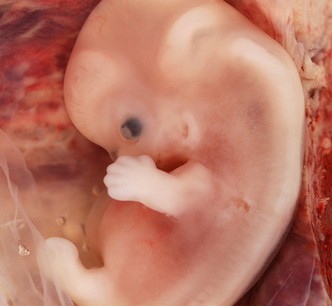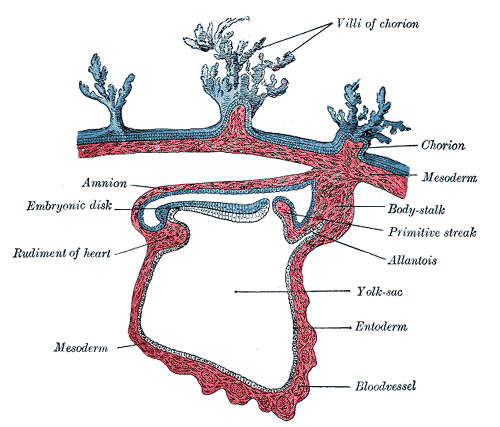Causes of birth defects and spontaneous abortions are two fold:
1. Chromosomal abnormalities
2. Genetic factors
Incidence For Major Chromosomal Abnormalities
•50% cases of spontaneous abortions
•7% of birth defects
•8% cases of gene mutations
•Commonest is Turner’s syndrome
•Euploid = An exact multiple of n. e.g. (n, 2n, 3n,4n etc.).
•Aneuploid = Any chromosome number that is not euploid. e.g. trisomy or monosomy
Chromosomal Abnormalities:
Chromosomal abnormalities are of the following two types:
1. Numerical
2. Structural
Numerical Chromosomal Abnormalities:
Numerical chromosomal abnormalities may arise due to:
- Meiotic Non disjunction
- Mitotic Non disjunction
- Translocations
1. Meiotic Non disjunction
•May involve autosomes or sex chromosomes
•Meiosis I:Two members of homologous chromosomes fails to separate and both members of a pair move into one cell.
•Meiosis II: When sister chromatids fail to separate. In females incidence increases with age
2. Mitotic Nondisjunction
Mosaicism:
•Some cells have abnormal chromosomal number and others have normal
•Occurs in the earliest cell divisions
•Affected individuals exhibit characteristics of a particular syndrome.
3. Chromosomal translocations
•Is rearrangement of parts between nonhomologous chromosomes.
•A fusion gene may be created when the translocation joins two otherwise separated genes.
•Translocations are common in cancer cells and may produce oncogenes that are responsible for malignant transformation.
There are two main types:
•Balanced: An even exchange of material with no genetic information extra or missing, and individual is normal.
•Unbalanced: Where the exchange of genetic material is unequal and part of one chromosome is lost & altered phenotype is produced ( Down’s syndrome)
Non Robertsonian / Reciprocal translocation
If no genetic material is lost during the exchange, the translocation is considered to be a balanced translocation.
Robertsonian translocations
•In which the long q arms of two acrocentric chromosomes become joined at a single centromere. Chromosome p arms are lost during Robertsonian translocations, but because acrocentric chromosomes have very short p arms that are repetitive, there are no phenotypic consequences. Translocation occurs between chromosomes 14 and 21.
Down Syndrome:
Cause
- Meiotic nondisjunction -95% (trisomy 21)
- Unbalanced translocation-4%b/w 21 and 13,14,15
- Mosaicism-1%
Incidence:
Female under 25— 1: 2000
At 35 — 1: 300
At 40 — 1:40
Klinefelter’s Syndrome:
Have 47 chromosomes (XXY) & a sex chromatin Barr body or 48(XXXY)
Cause
Nondisjunction of XX homologue
Found only in males
Incidence —1 in 500 males
Turner Syndrome:
45 X karyotype
Only monosomy compatible with life
Cause
- Nondisjunction in male gamete
- Structural abnormalities of X chromosome
- Mitotic nondisjunction
Structural Abnormalities:
•Chromosome breaks occur either as a result of damage to DNA (by radiation or chemicals, for example) or as part of the mechanism of recombination. •The total number of chromosomes is usually normal.
•Structural abnormalities arise when breaks are repaired incorrectly.
Deletions:
•The term “deletion” simply means that a part of a chromosome is missing or “deleted.”
•A very small piece of a chromosome can contain many different genes. When genes are missing, “instructions” are missing resulting in errors in the development of a baby.
Cri-Du-Chat Syndrome:
Partial deletion of chromosome 5
High pitched cry, poor muscle tone, a small head size , low birth weight and mental retardation
Angelmsn’s Syndrome:
- Microdeletion occurs on long arm of chromosome 15 (on maternal chromosome)
- Mentally retarded
- Cannot speak
- Prolonged periods of laughter
Prader-Willi Syndrome:
Microdeletion occurs on long arm of chromosome 15 (on paternal chromosome)
Obesity
Mental retardation
Hypogonadism
Cryptorchidism
Fragile X Syndrome (Xq 27):
•Fragile X is a genetic disorder that is caused by a break or weakness on the long arm of the X chromosome.
• Fathers are carriers, can only pass the affected gene on to their daughters.
• Is the most common inherited cause of learning disabilities and mental retardation known to exist.
 howMed Know Yourself
howMed Know Yourself



